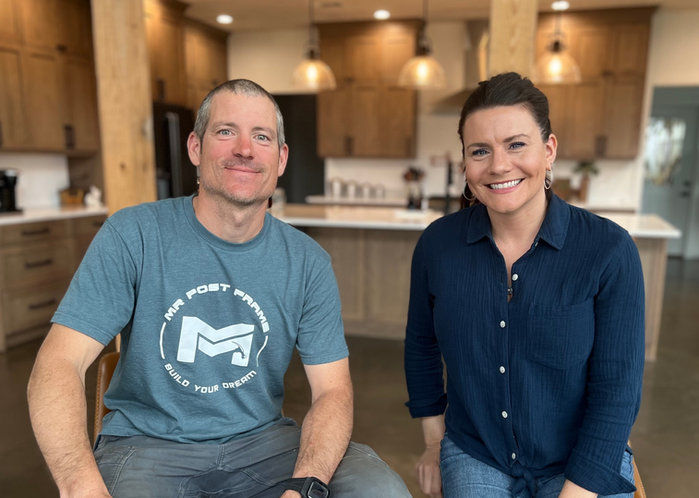Preparing for Concrete
- MR Post Frame

- Dec 28, 2023
- 3 min read
Hey there, everyone! It's a beautiful morning, and I'm thrilled to be back with you on September 30th, the last day of this month. I believe this is Episode 12 of the Mad County Build Series, and I'm really grateful for all of you who've been following along.

In today's episode, I'm calling it "Preparing for Concrete." I've got the entire structure framed up, house wrap in place, and rough-ins done. But now, the clock is ticking as I need to get this ready for concrete before winter sets in. One crucial part of this process is getting the rock foundation ready for the concrete. In my opinion, having about four inches of rock beneath the concrete slab is ideal. It provides adequate space for moisture to escape if any happens to get under the slab.
Last week, I brought in a load of rock and brought it up to the desired grade using string lines to ensure it's level. After compacting it a couple of times, I've moved on to working with electricians and setting up the plumbing. Since this is going to be a slab, all the plumbing must be situated underneath the concrete. This is a critical step, and I'm making sure to get it right.
I've laid out string lines everywhere to identify the finished walls for each room and the locations where I want the drain pipes, water pipes, and electrical conduit to pass through. Precision is key here to ensure everything lines up correctly. Once that's sorted, I start digging trenches, maintaining a quarter-inch per foot slope toward the septic system. This slope ensures proper drainage of sewage and other wastewater into the septic tank.

One lesson I've learned over the years is to keep the lines perpendicular to the house, which allows me to use long turn elbows and 45-degree angles, avoiding complex configurations. This simplifies the plumbing setup and ensures smooth water flow. Additionally, I emphasize the importance of using long turn elbows for sewage lines to prevent blockages.
After trenching and plumbing, I make sure to check the slope and the orientation of all the joints, ensuring they face the right direction. This meticulous approach helps avoid future complications. Once everything checks out, it's time to cover it up. I use duct tape to protect the open ends and prevent debris from entering.
Next, I move on to setting up concrete footings for wood posts, which will support the upper level of the house. I prefer to be cautious and ensure that these posts have a solid foundation, even though a 4000 PSI slab might suffice. It's a peace-of-mind step to prevent future issues.

Then comes the task of running water lines using PEX tubing under the concrete. These lines are insulated to maintain temperature, both hot and cold. The meticulous approach involves running the lines underground and then having them pop up where the manifold will be located. Each line will be labeled for easy identification later.
The plumbing system I'm using is a home run system, meaning each faucet has its dedicated line connected to the manifold. This setup avoids joints in the walls and ensures consistent water pressure even when multiple fixtures are in use.
After finishing the water lines, I'm about to move on to electrical conduit installation. I'll follow a similar procedure, ensuring all the lines are well-protected and ready for the next steps.

It's been a productive day, and I'm excited to see this project taking shape. Stay tuned for more updates, and I'll be back soon with the next episode of the Mad County Build Series. Thanks for joining me on this journey!

Patreon Group
Interested in tackling your build on your own? If you want to explore the possibility of being your GC or self-building, our Patreon membership is for you! It's a community of like-minded people offering support, discounts, Q/A, and more.







Comments